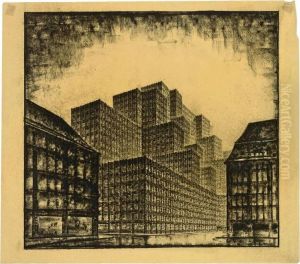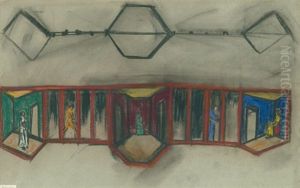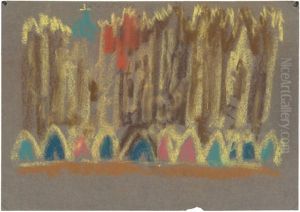Hans Poelzig Paintings
Hans Poelzig was a prominent German architect, painter, and set designer born on April 30, 1869, in Berlin, Germany. Poelzig is known for his versatile and innovative contributions to the early modernist movement in architecture. His style evolved over time, initially influenced by traditional German romanticism and eventually moving towards expressionism.
After studying at the Berlin Institute of Technology and the Academy of Arts, Poelzig worked as a city planning inspector in Breslau, which is now Wrocław, Poland. He held professorships in Breslau and later at the Berlin Institute of Technology, where he would also serve as director.
One of his earliest significant works was the Großes Schauspielhaus (Great Theater) in Berlin, which he renovated in 1919 for theatre impresario Max Reinhardt. This project was marked by its use of unconventional materials and dramatic interior designs, introducing Poelzig's distinct expressionist approach to architecture. The Großes Schauspielhaus featured an innovative use of lighting and a cavernous, domed auditorium with staggered seating, which was intended to improve acoustics and sightlines.
Poelzig was also known for his work on the I.G. Farben Building in Frankfurt, completed in 1931, which is considered one of the largest office buildings in Europe at the time and an example of New Objectivity architecture. It was functional, yet had a monumental quality and was designed to accommodate a large workforce efficiently.
In addition to his architectural work, Poelzig was involved in film as a set designer, most notably for the 1920 silent horror film 'The Golem: How He Came into the World' directed by Paul Wegener. His set designs for the film contributed to the eerie and fantastical atmosphere, which is characteristic of German expressionist cinema.
Poelzig's career came to an abrupt end with the rise of the Nazi regime, which disapproved of modernist and expressionist art and architecture. He died on June 14, 1936, in Berlin, leaving behind a legacy that influenced future architectural movements and the teaching of architecture in Germany.


